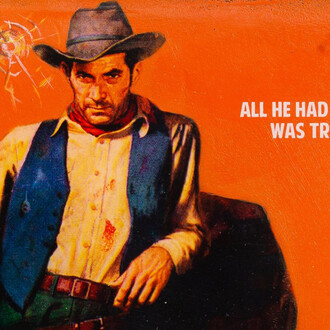In the 1960s, canvases stretched far beyond wooden frames, transforming into tunnels, bridges, train cars, and brick walls. Subversive in nature, often political in messaging, and deeply personal in practice, Graffiti and Street Art yearn for a democratized art world — one that is open, honest, and free to all people regardless of race, gender, class, or age. Graffiti and Street Art are more than just movements. They call to you. They invite you in. They don’t just challenge you to think; Graffiti and Street Art ask you to tear down only to rebuild, obstruct the old only to reconstruct something new. This exhibition is no different. West Chelsea Contemporary welcomes you to its fourth celebration of Graffiti, Street Art, and the artists born from these movements. This is a showcase of transformation. This is Concrete to Canvas.
Welcome to 1970s New York. Forged by Black and Latino communities, modern Graffiti is born. It’s a fast sport: create your signature and throw it up quick — on as many surfaces as possible in as many areas as you can. These are the Graffiti writers. You know them by their tags. But more importantly, they know each other. Fab 5 Freddy and Lee Quiñones tag entire subway cars as Fabulous 5. Kool Koor and Delta 2 join forces as members of the Tag Master Killers, a Rammellzee-founded legendary Graffiti crew. Graffiti flourishes alongside Hip Hop culture, fostering cross-subcultural connections as Doze Green finds a home in the Graffiti scene while breakdancing for Rock Steady Crew. Cey Adams takes Graffiti and Hip Hop’s connection further, eventually fusing Graffiti and graphic design to become founding creative director of Def Jam Recording, and later create mixed media works that investigate culture, race, and gender. Circling in the same crowds as Adams and Fab 5 Freddy, Lady Pink climbs the ranks as one of the first women active in the scene, eventually creating an all-female Graffiti crew called Ladies of the Arts. A young RISK hitchhikes from Los Angeles to New York City to tag with the greats, before bringing the enthusiasm of the city back to California and beginning the West Coast Graffiti movement. With these artists as its pioneers, Graffiti booms in popularity and scope across every corner of the country. It’s all around you — in fine art, marketing, politics, and music.
While Graffiti holds roots in text-based works focused on catching the eyes of fellow Graffiti writers, Street Art bases itself in imagery and aims to grab the attention of the masses in a public affair. Richard Hambleton’s “Shadowman” paintings splash across New York City, then Paris, London, and Rome, inspiring Blek le Rat to enter the Street Art scene with motifs of rats and allusions of irony. The infamous Banksy shortly follows and, like many contemporary Street Artists, invites viewers to contemplate new perspectives while exploring themes of allegory, activism, and identity. From longtime collaborations by Graffiti legends Crash and Daze to murals by Shepard Fairey and Sandra Chevrier, large-scale commissioned murals and public works remain a staple for Graffiti and Street Artists alike.
The movements of Graffiti and Street Art are synonymous with evolution, traversing the street to find their way back to the studio forever changed. With works by over fifty artists spanning across four decades, Concrete to Canvas features the stylistic range, immense influence, and immersive experience of this evolution. Reconstructing everyday spaces into expansive and imaginative studies of the world, these movements have carved an everlasting impact into the landscape of contemporary art. Celebrating what Graffiti historian Roger Gastman describes to be “the biggest cultural art movement of the last 50-plus years,” join West Chelsea Contemporary in transforming Concrete to Canvas.











![Betsabeé Romero, Al reverso de la pista [On the other side of the track], exhibition view. Courtesy of Blanton Museum](http://media.meer.com/attachments/e34357b533edcabd157cd23df35e2397c276a6bf/store/fill/330/330/a18279d745d1c0fe495891cad1f670b7d648211d009bb1e394576baaaa61/Betsabee-Romero-Al-reverso-de-la-pista-On-the-other-side-of-the-track-exhibition-view-Courtesy.jpg)




